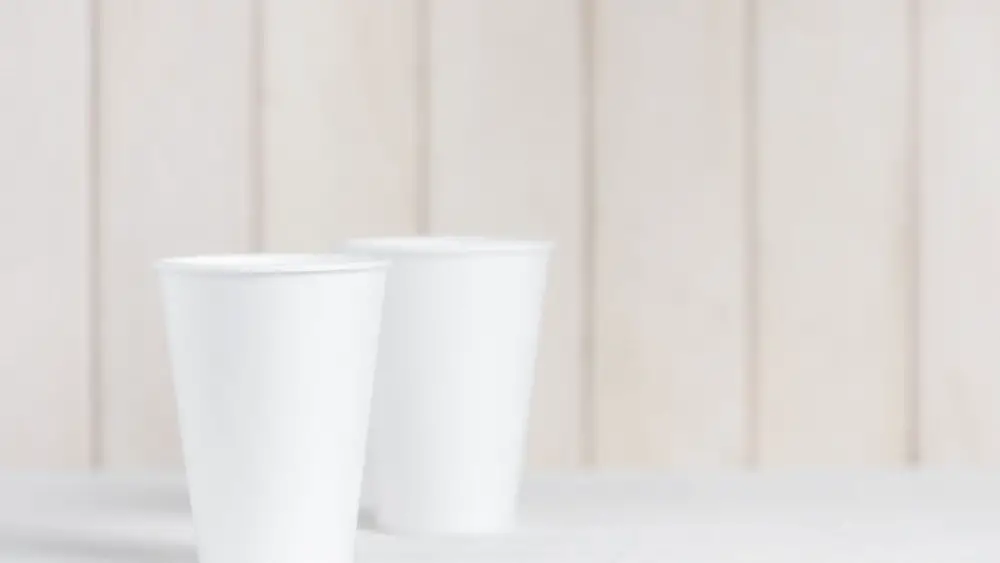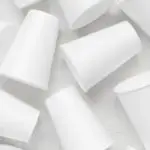Styrofoam is a non-biodegradable material that is used for packaging in the shipping industry, and the world produces over 14 million tons of it each year.
This poses a major problem to our environment, as landfills are filling up at record rates partially due to the use of styrofoam.
Not only is styrofoam non-biodegradable but it is also non-recyclable. This means that when you throw a styrofoam cup into the trash, it goes straight to the landfill, and there it will stay, but for how long?
According to Washington University, Styrofoam takes 500 years to decompose.
This fact has a large ecological impact, as it means that our landfills are filling up at an alarming rate. Styrofoam and styrofoam products fill up to 30% of our landfills.
A report from The Recycling Revolution has revealed that packaging materials take up a third of the average dump. It is also estimated that 20% of the styrofoam thrown away will end up in waterways.
On average, 5 pounds of trash are thrown away by each individual person per day. This adds up to around a ton of trash produced by the average American every year.
The US produces more trash than any other country in the world. 5% of the world’s population produces 40% of the trash. If this seems like a crazy statistic to you, that’s because it is!
There are several reasons why Styrofoam is used so prevalently around the world. It is a low-cost, lightweight material with good insulation properties and durability.
However, these same qualities have hidden indirect costs associated with the use of styrofoam.
The production process of styrofoam also has a detrimental impact on the environment. It involves the use of hazardous chemicals, fossil fuels, and the emission of greenhouse gasses.
It is relatively inexpensive to produce, which is another reason for its overuse.
While styrofoam has the benefits of being a lightweight, durable, inexpensive packaging material with insulating properties, the product has a sleuth of negative consequences, from the production process to the disposal.
The production of styrofoam includes the use of carcinogenic chemicals, which may be residually present in the product by the time it is available for consumer use.
What Is Styrofoam?
Styrofoam, also known as polystyrene, is a name commonly used for a variety of consumer products. For instance, packing peanuts and egg cartons are common examples of products that typically use styrofoam.
“Styrofoam” is a trademarked name for a specific type of plastic foam called Dow Chemical’s foam insulation, but it has become the common term for this type of material.
Styrofoam is a petroleum-based material, similar to the plastic that is used for things such as CD cases, but in expanded form.
This expanded foam has been used for things such as food service containers, home, and appliance insulation products, and product packaging for shipping.
This expanded foam-like plastic consists of 95% air, which makes it lightweight and gives it good insulation properties.
When Was Styrofoam Invented?
The trademarked brand of styrofoam was manufactured first as building insulation by The Dow Chemical Company in the 1940s, and since then “styrofoam” became the colloquial term for the material often used in food containers and packaging.
It was invented by accident when a Dow Chemical Company employee named Ray McIntire was attempting to develop a flexible insulator by combining materials under pressure.
In the process, he created foam polystyrene, a material that expanded 40 times in size.
The precursor to Styrofoam, expanded polystyrene foam, was first discovered in 1839 in Berlin by German pharmacist Edward Simon.
Can Styrofoam Be Recycled?
Styrofoam is recyclable, but it is not a commonly used process, as it is not lucrative. Most of the companies that have attempted to recycle styrofoam have operated at a loss.
Also, a lot of styrofoam waste cannot be recycled because of contamination with food or drink. Because the material is porous, it makes it extremely difficult to clean and reprocess.
Having said this, with some styrofoam materials such as packing peanuts, you could reuse them. Some eco-friendly companies even accept donations of packing peanuts in order to reuse them.
How Should I Dispose Of My Styrofoam Waste?

Unfortunately, most local agencies will not recycle styrofoam as it is too costly to be worthwhile. For this reason, most local agencies not only suggest but require you to throw your styrofoam into the garbage can or dumpster.
However, there may be some options for you to reuse your styrofoam waste, as long as it is uncontaminated. Packing peanuts, for example, can be reused for shipments to protect your items during transit.
Styrofoam can also be a great material to use for crafts, props, or decorations because it is so lightweight. Get creative with it and maybe you could use the styrofoam packaging from your new kitchen appliance to make a Halloween costume for your kid!
Simply draw templates on your styrofoam for the desired shape and cut them out. Then you can use paint or markers to decorate your new creation.
For those of you who are gardeners, another thing you could do with your styrofoam waste is to use it in the base of your planters so that you can use less soil.
Just cut up your styrofoam waste into little pieces, or use packing peanuts on the button of your planter. This makes your planters more lightweight and it improves water drainage.
Final Thoughts
The prevalent use of styrofoam in our packaging, coffee cups, and things like that have caused a huge environmental problem. In the US, 25 billion styrofoam coffee cups are thrown away every year.
That’s enough to circle the earth 426 times! And coffee cups are just one of many single-use styrofoam products that people use daily. Because styrofoam doesn’t biodegrade, a single-use coffee cup you throw away today will remain in a landfill for the next 500 years.
We, as a society, must move away from the use of styrofoam and single-use plastics generally for the sake of future generations. Unfortunately, due to the low cost of production, it looks like the use of styrofoam won’t be going away anytime soon.
But despite the low cost of production, there is an immeasurable hidden cost on our environment as landfills fill up.
Although, there are more and more eco-friendly alternatives being adopted by companies as the years go by, and we hope that this will be paving the way for a more conscientious and eco-friendly future.



